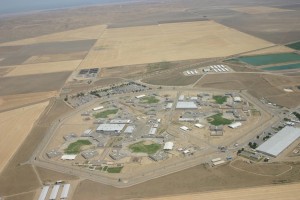
Normally, you wouldn't put "prisons" and "solar" together when thinking about a significant health problem hitting California. But the two prisons in question are in the dry, dusty Central Valley. The solar manufacturing is on huge construction sites in the California desert. Anyone who lives in those areas of California might quickly add these two clues together and come up with an answer:
Valley Fever.
Valley Fever can cause something like a nasty flu, but some people, especially those with compromised immune systems, can die. It is not contagious. Instead the illness spreads when people inhale fungal spores carried in the dirt by the wind.
California's prison system has been fighting a losing battle with Valley Fever since 2006. In particular, inmates in two prisons along the I-5 corridor are right in harms way.
Now the federal receiver in charge of health care in California's prisons has ordered state officials to move 3,300 inmates out, as Julie Small detailed on The California Report Wednesday morning. Inmates at higher risk include those over age 55, people undergoing chemotherapy or anyone with an illness that compromises the immune system, such as HIV/AIDS.